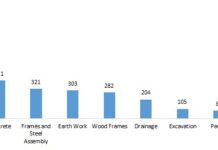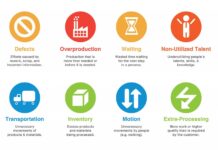The construction industry is undergoing a rapid transformation driven by digital tools and streamlined processes. Two key forces leading this change are Lean Construction and Building Information Modeling (BIM). While each offers significant benefits independently, their combined implementation unlocks substantial efficiencies, reduces waste, and enhances project outcomes.
The Rise of Integrated Approaches
Traditionally, construction projects have suffered from fragmented workflows, poor communication, and rework. These inefficiencies stem from siloed departments, lack of real-time data, and inadequate visualization. Lean Construction addresses these problems by focusing on value creation, waste elimination, and continuous improvement. BIM, meanwhile, provides a digital representation of the project, enabling collaboration, clash detection, and data-driven decision-making.
How BIM and Lean Complement Each Other
The synergy between BIM and Lean lies in their shared goals: optimized workflows and reduced waste. BIM’s digital models provide the foundation for Lean principles like Just-in-Time delivery and pull planning. By visualizing the entire project lifecycle, BIM allows teams to identify potential bottlenecks and proactively address them. This proactive approach minimizes delays, rework, and cost overruns.
Key Synergies in Practice
Several specific applications demonstrate the power of integration:
- 4D Scheduling: Linking BIM models to project schedules (4D BIM) allows for realistic simulations of construction sequences, identifying potential clashes and logistical challenges before they occur.
- Heat Mapping: Using digital tools to visualize workspace allocation optimizes site layouts, reducing congestion and improving worker efficiency.
- Model Maturity Index (MMI): Progressively refining BIM models through increasing levels of detail ensures that data accuracy aligns with project phases, minimizing errors and rework.
- Visual Management: Implementing digital dashboards and real-time data streams enhances transparency, enabling teams to monitor progress, identify problems, and drive continuous improvement.
The Benefits of Integration
The combined implementation of Lean Construction and BIM delivers measurable benefits:
- Reduced Waste: Eliminating unnecessary steps and streamlining processes minimizes material waste, labor costs, and project delays.
- Improved Collaboration: Real-time data sharing and transparent workflows foster better communication between stakeholders.
- Enhanced Decision-Making: Data-driven insights enable informed decisions, reducing risks and optimizing resource allocation.
- Increased Productivity: Streamlined workflows and optimized site layouts improve worker efficiency and overall project throughput.
The Future of Construction
As the construction industry embraces digital transformation, the integration of Lean Construction and BIM will become increasingly critical. The ability to turn data into actionable insights, combined with streamlined workflows, will define the competitive advantage for forward-thinking firms. By prioritizing efficiency, collaboration, and continuous improvement, the industry can unlock new levels of productivity and deliver projects with greater value and sustainability.
In conclusion, the synergy between Lean Construction and BIM is not merely a trend but a fundamental shift in how projects are planned, executed, and delivered. By embracing these integrated approaches, the construction industry can overcome long-standing challenges and build a more efficient, sustainable, and value-driven future
















































